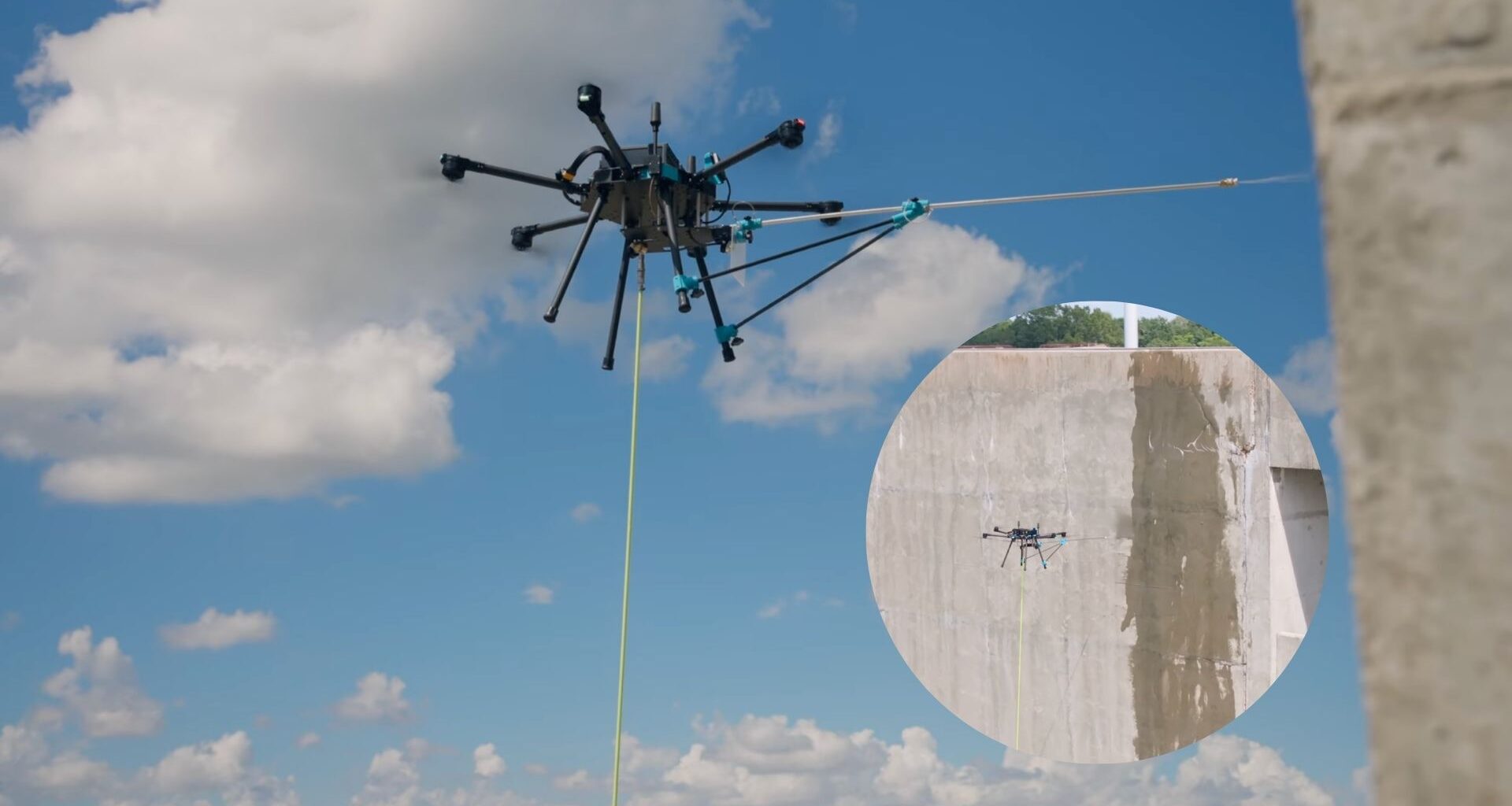Robotics company Lucid Bots, this week, unveiled a new module that lets its Sherpa drone paint buildings.
The drone, already known for cleaning exteriors and windows, can now spray paint and coatings, turning it into a full-fledged construction assistant.
This development marks a major shift in how high-risk, labor-intensive exterior work is done.
The Sherpa drone can reach up to 160 feet and operate continuously with a power tether. With the new painting module, it can cover more than 200 square feet per minute.
One operator can manage the drone easily using simple controls, completing jobs up to three times faster and at roughly half the cost of traditional methods.
“Modular robotics is redefining how essential work gets done,” stated Andrew Ashur, founder and CEO of Lucid Bots.
“The pace required to restore and expand our infrastructure demands automation that can do, not just sense and observe. Robots are the arms and legs of AI. Done right, they raise productivity, improve safety, and increase human prosperity.”
Solving labor and safety challenges
The timing of the new Sherpa module is significant. The US is experiencing one of the largest infrastructure expansions in decades, while the construction industry faces a severe labor shortage.
More than 40 percent of skilled workers are expected to retire by 2031, leaving gaps in jobs that involve heights, hazards, and repetitive strain.
The Sherpa drone addresses these challenges. By automating dangerous and repetitive tasks, it reduces the risk to human workers.
Instead of relying on scaffolding, ladders, or safety harnesses, the drone handles exterior painting with precision and consistency. This not only improves safety but also helps contractors meet deadlines faster.
Embodied AI in action
The drone is powered by embodied AI—artificial intelligence integrated into a physical system. Unlike AI that only analyzes data, embodied AI allows machines to interact with and manipulate the real world.
In Sherpa’s case, it means adjusting for wind, surface texture, and complex building geometries to apply an even coat of paint.
In short, the drone doesn’t just observe the job but it also completes it. This technology makes it possible to maintain high quality in tasks that are difficult or dangerous for human workers.
Graffiti removal, waterproofing stadiums, and high-rise painting projects can now be done more efficiently and with fewer errors.
Modular design and market potential
Lucid Bots designed the painting module to attach to the existing Sherpa platform. Facilities that already use Sherpa for cleaning can upgrade without buying entirely new equipment.
This modular approach keeps costs predictable and simplifies adoption for contractors.
“By the time you scaffold a building like this and put the product on, work through all of any kind of tweaks that need to be done…I would say it’s a lot faster, 20 times,” said Bill Daniel, an executive from Prosoco.
The company has deployed more than 500 robots across the US. Early projects using the painting module include stadium waterproofing and graffiti removal along highways.
Interest in the new capability has already exceeded expectations. With the commercial painting and coating market valued at $237 billion, the potential for disruption is huge.

